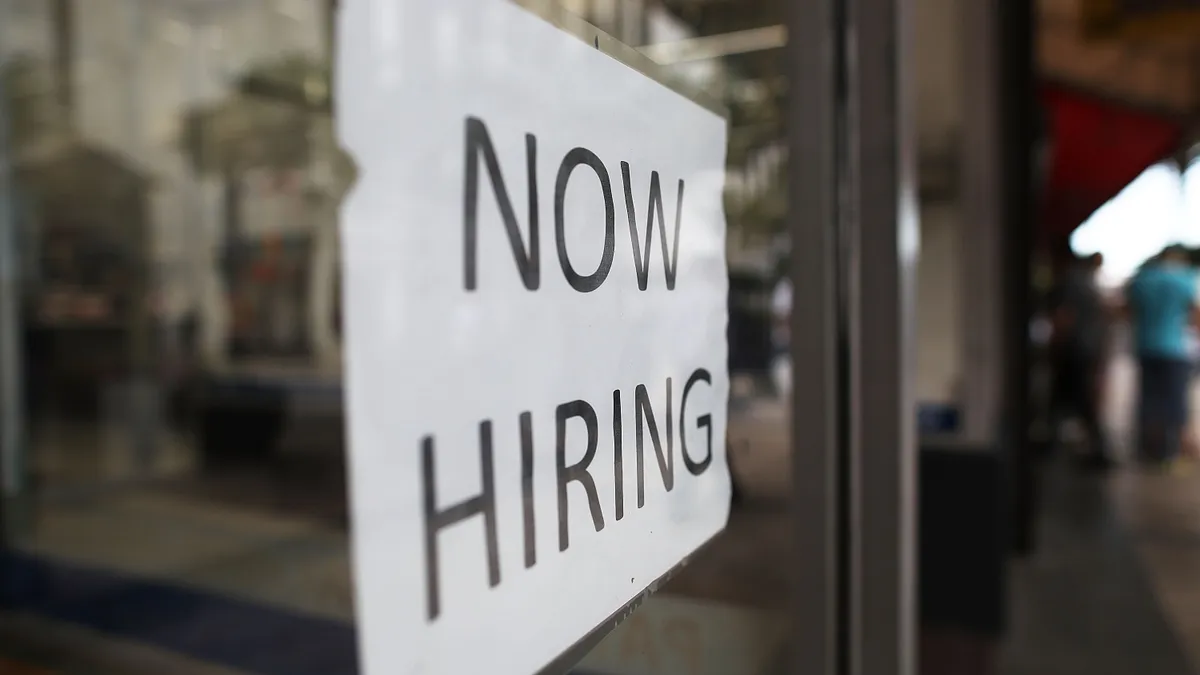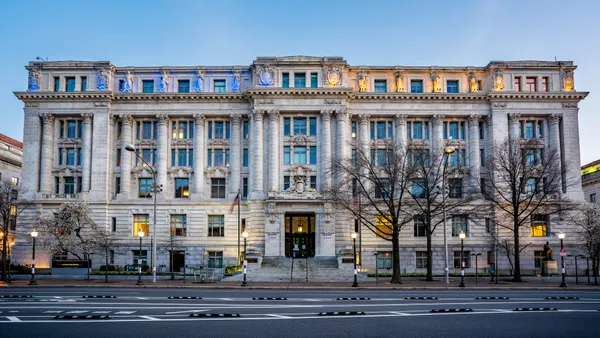Dive Brief:
- While many restaurants have trimmed their hours or adopted efficient technology to survive the labor shortage, a new Moody's report suggests such solutions aren't enough. Restaurants will be "forced to increase wages to attract the staff they need," William Fahy, vice president and senior credit officer at Moody's Investors Services, said in an emailed statement.
- Hospitality workers also quit their jobs in August at a rate of 6.8%, or more than double the record national average quit rate of 2.9%, according to the Bureau of Labor Statistics. More than 890,000 hospitality workers quit in August.
- The labor crisis has been particularly hard on full-service restaurants. Per BLS data cited by Moody's, this segment employs nearly 500,000 fewer workers than it did in February 2020. According to Black Box Intelligence, full-service concepts are working with 6.2 fewer employees in the kitchen than they were in 2019, and 2.8 fewer front of house employees.
Dive Insight:
Despite this historic labor crisis, sales growth at many restaurant chains remain high, with some companies matching or surpassing 2019 levels. But those sales figures may stem from higher pricing to offset wages and inflation — a solution that Moody's warns could soon anger customers.
"Once consumers begin to balk at the higher prices, losing patience with longer waits or not having their favorite menu item, inflation will exert pressure on restaurant margins," Moody's states in its report.
Many of the restaurant chains that are reporting sales gains are also in the quick-service segment. This category's employment gap is smaller than the gap in the full-service segment, putting less stress on fast food restaurants. But QSRs are far from untouched by labor issues, with many limiting business hours or closing dining rooms because they don't have enough employees to cover shifts.
Restaurant suppliers are also experiencing labor challenges, which has kicked off a domino effect in the industry, causing product shortages and higher food prices. This is putting more pressure on restaurants' bottom lines, and forecasts of a continued hospitality employee exodus could tighten the squeeze on restaurants. A new survey from Joblist and reported by Restaurant Business, for example, finds that 58% of hospitality workers plan to leave their jobs by the end of the year.
Several restaurant chains have responded to the shrinking labor pool by hiking employee pay and offering hiring incentives like free iPhones and hiring bonuses. This summer marked some of the fastest wage growth in the segment since the early 1980s, and average pay surpassed $15 an hour for the first time in May.
Though the restaurant industry has historically had high turnover rates, many employees are leaving now because of harassment they face from diners for enforcing COVID-19 mandates, as well as concern over contracting the virus at work. Fifty-nine percent of restaurant operators also fear that employees will quit if forced to receive the vaccine, according to Black Box Intelligence data.
"While Moody's still expects that industry conditions will improve over the next 12 months as consumers continue to dine out and as government restrictions are eliminated, health and safety concerns are rising again as the delta variant of the coronavirus spreads. This along with the current labor shortage, supply chain issues and inflation pressures is putting an added level of risk to Moody's earnings forecast for the restaurant industry," Moody's states in its report.









